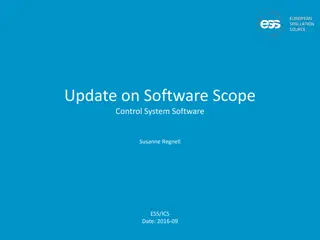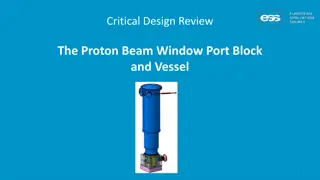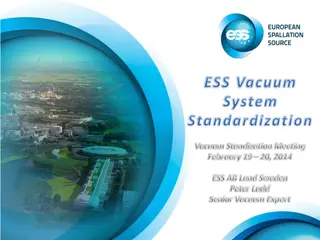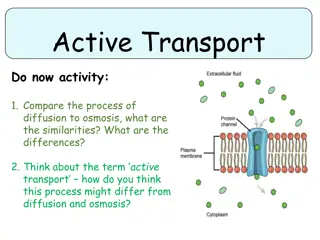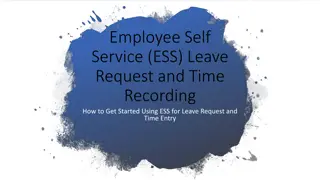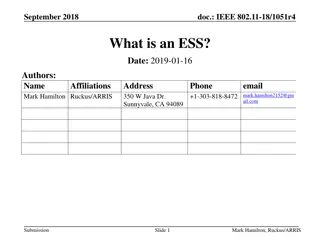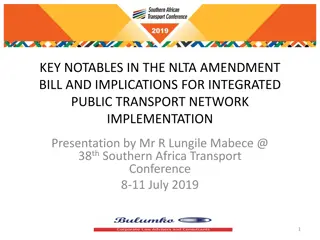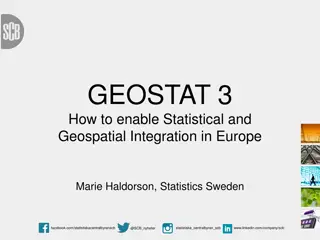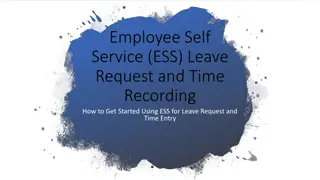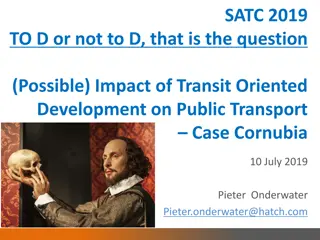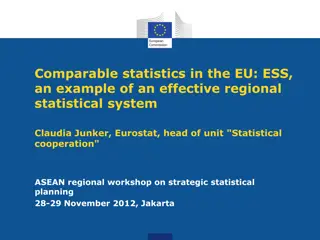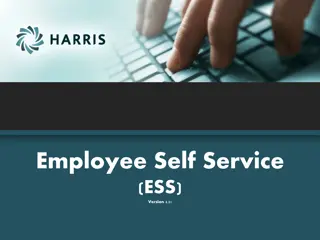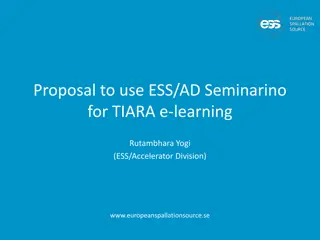Scope Split of Transport & Integration Responsibilities at ESS
The European Spallation Source (ESS) project involves the transportation and assembly of various equipment within the tunnel, with defined responsibilities between ESS and partner organizations. ESS handles the costs and support for moving equipment, while partners are responsible for assembly. Specific details are provided for different components like ion sources, RFQ, and DTL tanks, outlining how each party contributes to the overall project. Negotiated plans for transport and assembly are described, emphasizing the collaborative effort required for successful implementation.
- Transport integration
- ESS project
- Equipment assembly
- Collaborative responsibility
- Infrastructure development
Download Presentation

Please find below an Image/Link to download the presentation.
The content on the website is provided AS IS for your information and personal use only. It may not be sold, licensed, or shared on other websites without obtaining consent from the author. Download presentation by click this link. If you encounter any issues during the download, it is possible that the publisher has removed the file from their server.
E N D
Presentation Transcript
Scope split of transport & integration Risks with transport and integration Definition of scope split between WU and ESS Presented by: Frank Hellstr m, WP3 Liaison Officer 1
General ESS is responsible for transporting all equipment from a defined staging area (RATS facility or tunnel drop hatch at front end area) to the defined staging area of assembly for each work unit in the tunnel at the cost of ESS. ESS shall provide at its most support (technicians for assistance during assembly of system) to the installation teams of the individual in-kind partners. The ESS support groups will perform the assembly of their systems and install them on the respective component or beam line (vacuum, cooling, beam instrumentation). There is no account or budget associated with WP3 that covers the ESS related costs. 2
ISRC & LEBT ESS will put in place the high voltage ground plate of the ion source and LEBT support and anchor both to the ground. The INFN-LNS Catania team will unpack and assemble the ion source and LEBT with the assistance of ESS. (See details on covered work in ESS-0038119). 3
RFQ The support for the RFQ will be put in its final location in the tunnel by ESS and anchored to the ground. The RF wave-guide assembly between power coupler and interface to ESS will be assembled on a movable support at CEA Saclay. The transport of this assembly from CEA to its final location in the ESS tunnel is the responsibility of ESS. The CEA-IRFU team will unpack and assemble the RFQ and auxiliary components. (See details on covered work in ESS-0057778). 4
MEBT The detailed scope of the ESS-Bilbao work for transport and assembly is currently negotiated. The current plan is that ESS-Bilbao will be responsible of the shipment to the RATS facility or front-end access hatch. ESS-ERIC will transport the boxes to the staging are in the ESS tunnel if assembly is performed in the tunnel. Otherwise ESS will transport the preassembled MEBT from the RATS facility to the final location in the tunnel and anchor them to the ground. ESS-Bilbao is expected to assemble the subsystems and sub rafts. 5
DTL The overall responsibility of assembly of the DTL tanks is INFN-LNL responsibility. INFN-LNL Legnaro will perform this work with one assembly team and ESS two assembly teams. The transport of the tanks from the RATS facility to the final location in the ESS tunnel and its anchoring to the ground is ESS responsibility. The assembly of the auxiliary components (power coupler, tuners, etc.) will be performed by INFN-LNL. (See details on covered work in ESS-0033219). 6
Scope split of transport & integration Discussion points: Issues not in contract or previous slides Risks not accounted for Orphaned scope Owners of work Environmental requirements in tunnel during assembly Other 7
Scope split of transport & integration Thank you! 8






